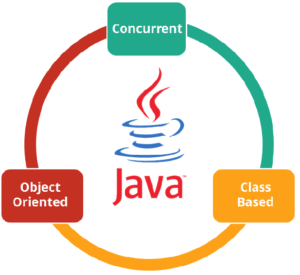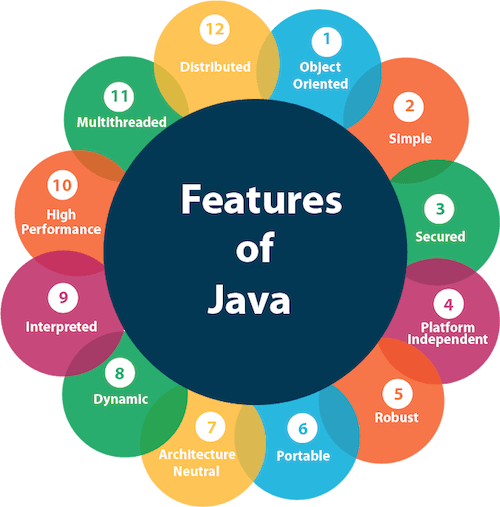The Fundamentals of Java Programming: An Introduction
Table of Contents
Introduction To Java Language
In this article, we are talking about Introduction to Java, Why Java We use, The Structure of Java Programs, Who Develops Java, and much more about Java information are given in this article.
Java is an object-oriented, high-level programming language that was developed by Sun Microsystems (now owned by Oracle Corporation) in the mid-1990s. It was designed to be platform-independent, meaning that Java programs can run on any device or operating system that has a Java Virtual Machine (JVM) installed. In this post, You get to know about the introduction to Java.
History of Java Language
After discussing Introduction to Java, we discuss the History of Java. Java, developed by James Gosling (who is the father of Java, and the developer of Java), and his team at Sun Microsystems (later acquired by Oracle Corporation) in 1995, has a rich history that spans several decades. Java team members are known as Green Team. Here’s a brief overview of the history of Java:
-
Origins (1990s):
- In the early 1990s, a team of engineers at Sun Microsystems, led by James Gosling, began developing a new programming language called Oak. In this post, You get to know about the introduction to Java.
- The team aimed to create a language that could be used to program consumer electronic devices, such as set-top boxes and handheld devices.
- Oak was designed to be platform-independent, secure, and capable of running on various hardware architectures. In this post, You get to know about the introduction to Java.
-
Introduction of Java (1995):
- In 1995, Oak was renamed Java to avoid trademark conflicts with another company named Oak Technology.
- The first public release of Java, known as Java 1.0, was made available to the public. In this post, You get to know about the introduction to Java.
- Java gained early popularity due to its “Write Once, Run Anywhere” principle, which allowed Java programs to be executed on any system with a Java Virtual Machine (JVM).
-
Evolution and Popularity:
- Java continued to evolve, with new versions and updates introducing various features and improvements. In this post, You get to know about the introduction to Java.
- The release of Java 2 (J2SE) in 1998 brought significant enhancements to the language, including the introduction of the Java Development Kit (JDK) and the Swing GUI toolkit. In this post, You get to know about the introduction to Java.
- Java quickly gained popularity among developers for its robustness, simplicity, and extensive libraries.
-
Expansion to Enterprise and Web (the late 1990s and early 2000s):
- Java expanded its reach into enterprise computing with the introduction of Java Enterprise Edition (Java EE). In this post, You get to know about the introduction to Java.
- Java EE provided a set of tools and APIs for developing scalable and distributed enterprise applications. In this post, You get to know about the introduction to Java.
- Additionally, Java became a popular choice for web development with the advent of technologies like JavaServer Pages (JSP) and Java Servlets.
-
Open Sourcing (2006):
- In 2006, Sun Microsystems open-sourced the Java platform under the GNU General Public License (GPL) as the OpenJDK project. In this post, You get to know about the introduction to Java.
- This move allowed developers and organizations to access and contribute to the development of Java.
-
Further Enhancements and Java SE:
- Over the years, Java has continued to evolve with the introduction of new versions and features. In this post, You get to know about the introduction to Java.
- Java Standard Edition (Java SE) became the primary platform for developing general-purpose Java applications.
- Each release introduced improvements in performance, security, language features, and libraries. In this post, You get to know about the introduction to Java.
-
Acquisition by Oracle (2010):
- In 2010, Oracle Corporation acquired Sun Microsystems, becoming the steward of the Java platform.
- Oracle has since continued the development and support of Java, releasing new versions and updates. In this post, You get to know about the introduction to Java.
Today, Java remains one of the most popular programming languages, widely used in a variety of domains, including enterprise applications, Android app development, web development, scientific research, and more. Its versatility, robustness, and extensive ecosystem of libraries and frameworks contribute to its continued success. In this post, You get to know about the introduction to Java.
James Gosling
Why Java was Developed?
In this post, You get to know about the introduction to Java. James Gosling had only one principle behind the creation of Java, Write Once Read Anywhere. That means that the language would be written only once time and it would be used everywhere. Java was developed with the aim of addressing the challenges faced in programming languages at the time and providing a platform-independent solution for developing software. The Java programming language originated as part of a research project to develop advanced software for a wide variety of network devices and embedded systems. Java is a multiple-platform and distributed programming language. It can be used for creating console applications, GUI applications, web applications, mobile application development, game development, or for PC or embedded systems. Java is a simple, fast, and human-understanding language, so it is done easily. This happens not only in computers but in all devices. Nowadays banking, online shopping, and online forms are all possible with the help of Java. In this post, You get to know about the introduction to Java.
Features of Java
After discussing the Introduction to Java and the history of Java. Here are some key features and concepts related to Java:
- Object-Oriented: Java is primarily an object-oriented programming (OOP) language, which means it focuses on creating and manipulating objects to build applications. It supports key OOP concepts such as encapsulation, inheritance, and polymorphism. In this post, You get to know about the introduction to Java.
- Platform-Independence: Java programs are compiled into bytecode, which can be executed on any platform with a JVM. This “write once, run anywhere” capability makes Java highly portable. In this post, You get to know about the introduction to Java.
- Syntax and Structure: Java syntax is similar to C and C++, making it relatively easy for programmers familiar with those languages to learn Java. Java programs are organized into classes, which contain methods (functions) and fields (variables). In this post, You get to know about the introduction to Java.
- Memory Management: Java manages memory allocation and deallocation automatically through a process called garbage collection. Developers don’t need to explicitly allocate or deallocate memory as in some other programming languages. In this post, You get to know about the introduction to Java.
- Standard Library: Java comes with a comprehensive standard library, known as the Java Class Library, which provides a wide range of prebuilt classes and methods for common programming tasks. It includes functionality for networking, I/O, graphics, database access, and more. In this post, You get to know about the introduction to Java.
- Large Ecosystem: Java has a vast ecosystem with numerous libraries, frameworks, and tools that extend its capabilities. Some popular frameworks and libraries include Spring, Hibernate, Apache Struts, and JavaFX. In this post, You get to know about the introduction to Java.
- Application Domains: Java is widely used for developing a variety of applications, including desktop applications, web applications, mobile apps (Android), enterprise software, scientific applications, and more.
- Security: Java has built-in security features to protect against various threats, such as sandboxing for applets and a security manager for controlling access to resources. In this post, You get to know about the introduction to Java.
Java has remained a popular programming language for several decades due to its versatility, robustness, and wide adoption in various industries. It continues to evolve with regular updates and improvements to meet the changing needs of developers and businesses. In this post, You get to know about the introduction to Java.
Read this post:- Draw a tree in Python using the turtle module
Why We Should Choose Java?
In this post, You get to know about the introduction to Java. There are several reasons why Java is commonly chosen in software development:
- Independent on Platform: Java’s ability to run on any platform with a JVM makes it highly versatile. This platform independence allows developers to write code once and deploy it on multiple operating systems, such as Windows, macOS, Linux, and more. In this post, You get to know about the introduction to Java.
- Large Community and Ecosystem: Java has a vast and active community of developers worldwide. This community contributes to an extensive ecosystem of libraries, frameworks, and tools that make development faster and more efficient. Additionally, the availability of resources, documentation, and community support makes it easier for developers to find solutions to problems. In this post, You get to know about the introduction to Java.
- Robustness and Reliability: Java’s design principles prioritize reliability and robustness. Its strict compile-time checks and exception handling help catch errors early in the development process, reducing the chances of runtime errors and crashes. Java also includes features like garbage collection, which automatically manages memory, making the language more resilient and less prone to memory leaks. In this post, You get to know about the introduction to Java.
- Object-Oriented Programming (OOP): Java’s strong support for OOP concepts allows developers to write modular, reusable, and maintainable code. OOP promotes code organization, encapsulation, inheritance, and polymorphism, making it easier to understand and modify large codebases. In this post, You get to know about the introduction to Java.
- Scalability and Performance: Java offers excellent performance and scalability, making it suitable for building both small and large-scale applications. The JVM’s optimizing features, such as just-in-time (JIT) compilation, help improve runtime performance. Java’s multi-threading capabilities also enable developers to build concurrent and highly scalable applications. In this post, You get to know about the introduction to Java.
- Enterprise-Ready: Java has been widely adopted in enterprise environments due to its stability, security features, and long-term support. It is commonly used for building server-side applications, web services, and enterprise systems. Additionally, Java frameworks like Spring provide robust solutions for building scalable and maintainable enterprise applications. In this post, You get to know about the introduction to Java.
- Android & Game Development: Java has been the primary programming language for Android app and game development for many years. It offers a rich set of APIs and libraries specifically tailored for mobile development, allowing developers to create powerful and feature-rich applications for the Android platform. In this post, You get to know about the introduction to Java.
Overall, Java’s combination of platform independence, robustness, scalability, and a large ecosystem of tools and libraries has made it a popular choice for a wide range of software development projects, from desktop applications to enterprise systems and mobile apps.
Structure of Java Program
In this post, You get to know about the introduction to Java. The structure of a typical Java program consists of several components organized in a specific order. Here is the general structure of a Java program:
- Package Declaration: (Optional) The package declaration statement is used to specify the package (namespace) in which the current Java file resides. It helps organize related classes into logical groups. In this post, You get to know about the introduction to Java.
package com.example.mypackage;
- Import Statements: (Optional) Import statements are used to import classes or entire packages from other packages. They allow you to use classes from other packages without having to provide their fully qualified names. In this post, You get to know about the introduction to Java.
import java.util.*;
- Class Declaration: Every Java program contains at least one class. The class is declared using the
'class'keyword, followed by the class name. The main logic of the program resides within the class. In this post, You get to know about the introduction to Java.
public class MyClass {
// Class members and methods go here
}
- Main Method: Every Java program must have a ‘
main'method, which serves as the entry point of the program. It is declared with the ‘public static void main(String[] args)'signature. The program execution begins from this method.
public class MyClass {
public static void main(String[] args) {
// Program logic goes here
}
}
- Class Members and Methods: Inside the class, you can define variables (fields) and methods. Variables hold data, and methods define the behavior of the class. They can be instance variables (belonging to objects) or static variables (belonging to the class itself).
public class MyClass {
// Instance variable
private int myVariable;
// Static variable
private static String myStaticVariable;
// Constructor
public MyClass() {
// Constructor logic
}
// Instance method
public void myMethod() {
// Method logic
}
// Static method
public static void myStaticMethod() {
// Static method logic
}
}
- Statements and Expressions: Inside methods, you write statements and expressions to perform specific tasks. Statements are complete instructions that perform an action, while expressions produce a value.
public class MyClass {
public static void main(String[] args) {
// Statement
int x = 5;
// Expression
int y = x + 3;
}
}
This is the basic structure of a Java program. It’s important to note that while this structure provides a general guideline, the actual implementation and organization may vary depending on the complexity and requirements of the program. In this post, You get to know about the introduction to Java.
Java Terminology
In this post, You get to know about the introduction to Java. Here are some common Java terminologies:
- Class: A class is a blueprint or template that defines the properties and behaviors of objects. It serves as a blueprint for creating individual instances, known as objects, that belong to that class. In this post, You get to know about the introduction to Java.
- Object: An object is an instance of a class. It represents a specific entity with its own state (data) and behavior (methods). Objects are created from classes using the “new” keyword. In this post, You get to know about the introduction to Java.
- Method: A method is a block of code that performs a specific task or operation. It is defined within a class and can be invoked (called) to perform its functionality. In this post, You get to know about the introduction to Java.
- Variable: A variable is a named storage location that holds a value. In Java, variables have a specific data type that determines the type of values they can store. In this post, You get to know about the introduction to Java.
- Data Type: A data type specifies the type of data that a variable can hold. Common data types in Java include int (integer), double (floating-point number), boolean (true/false), char (single character), and String (sequence of characters).
- Inheritance: Inheritance is a mechanism in object-oriented programming that allows a class (called a child or subclass) to inherit properties and behaviors from another class (called a parent or superclass). It promotes code reuse and supports the concept of hierarchical relationships between classes.
- Polymorphism: Polymorphism is the ability of an object to take on different forms or exhibit different behaviors based on the context. In Java, polymorphism is achieved through method overriding and method overloading.
- Encapsulation: Encapsulation is the practice of bundling data (variables) and methods (functions) together within a class, hiding the internal implementation details, and providing controlled access to the data through public methods. In this post, You get to know about the introduction to Java.
- Interface: An interface defines a contract for a set of methods that a class must implement. It specifies a set of method signatures without providing the implementation details. Classes can implement multiple interfaces, enabling multiple inheritances of behavior. In this post, You get to know about the introduction to Java.
- Exception: An exception is an event that occurs during the execution of a program and disrupts the normal flow of code. Java provides an exception-handling mechanism to catch and handle exceptions, preventing unexpected program termination.
- Package: A package is a way to organize related classes and interfaces into a namespace. It provides a means of encapsulating and grouping related code together, aiding in code organization and modularization.
These are just a few key Java terminologies. Java has a rich and extensive set of terms and concepts, and mastering them is crucial for effectively understanding and writing Java code. In this post, You get to know about the introduction to Java.
So in this article, you get an introduction to Java and full basic knowledge of Java like the history of Java, the structure of Java programs, java terminology, features of Java, why we choose Java, etc.






0